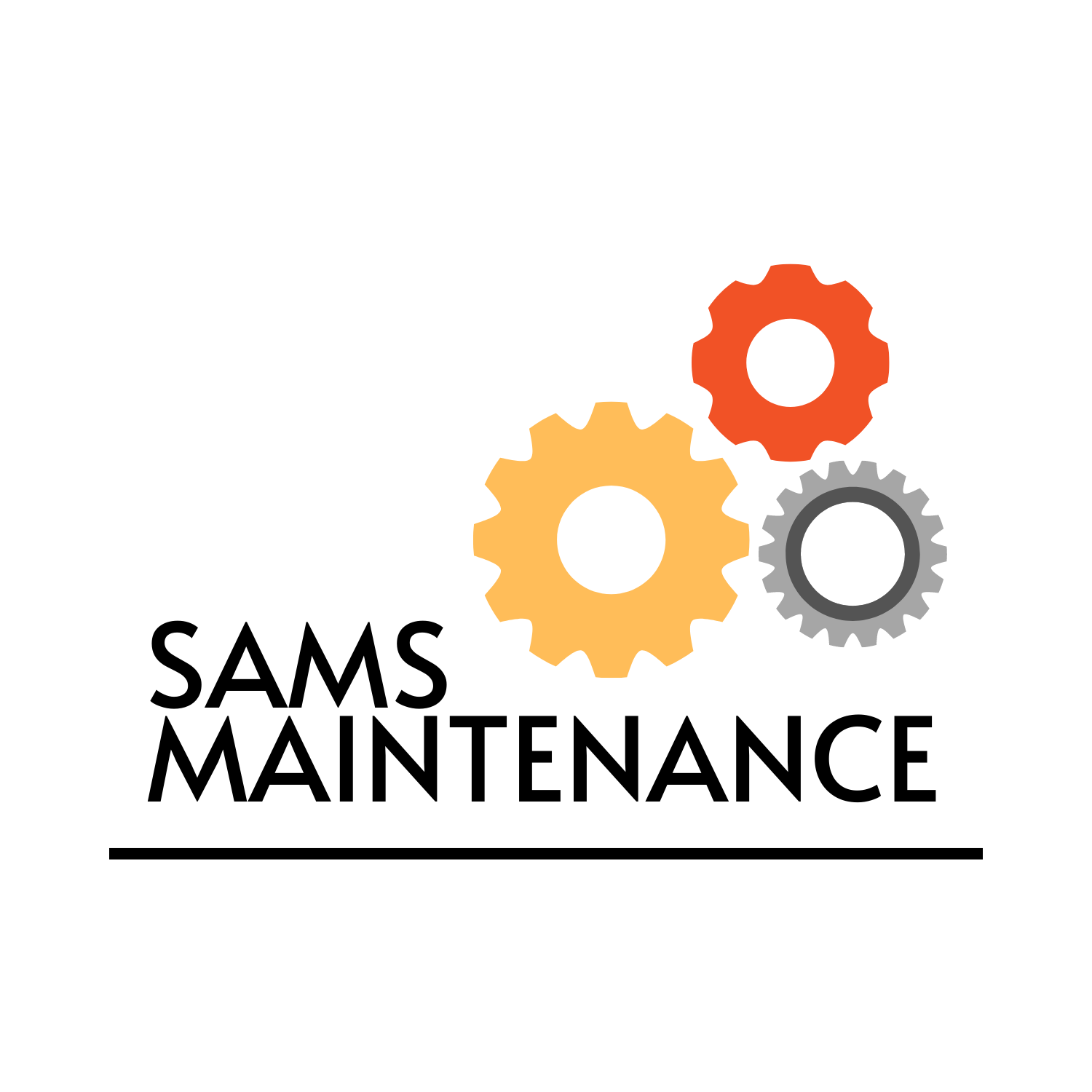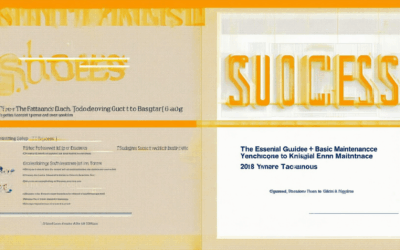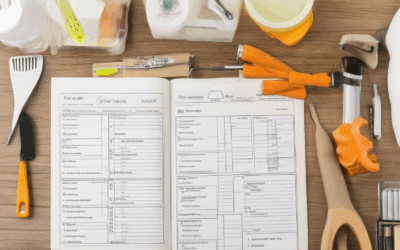Homeownership comes with its fair share of responsibilities, and one of the most crucial yet often overlooked aspects is maintaining your property in top shape. As a homeowner, you likely juggle multiple priorities, from family life to career commitments, making it easy to overlook minor home repairs until they escalate into major issues. However, neglecting routine maintenance can lead to costly repairs down the line, not to mention the stress and inconvenience that come with unexpected breakdowns. To stay ahead of potential problems and preserve the value of your home, adopting a structured routine home repair schedule is essential. This simple practice ensures that minor issues are addressed before they become significant, saving you time, money, and hassle. Whether you’re a seasoned homeowner or new to the role, creating a comprehensive routine home repair schedule using a checklist can be a game-changer. By incorporating key components such as seasonal tasks, appliance checks, and safety measures, you can maintain your home in peak condition year-round. In this guide, we’ll explore how to create an effective routine home repair schedule, the importance of regular inspections, and how to tailor a checklist to suit your unique needs. Stay proactive and enjoy the peace of mind that comes with a well-planned maintenance routine.
Key Takeaways
– Prioritize Routine Home Repairs: A structured home repair schedule helps prevent minor issues from escalating into major, costly problems.
– HVAC System Health: Regularly inspect and clean air filters, check ductwork for leaks, and ensure your heating and cooling systems operate efficiently.
– Plumbing Precision: Examine pipes for leaks, test water pressure, and ensure your sump pump is functional, especially during rainy seasons.
– Appliance Performance: Test major appliances like refrigerators, ovens, and dishwashers to ensure they function safely and efficiently.
– Electrical Safety First: Inspect outlets, switches, and circuit breakers for issues, and check for exposed wires or electrical hazards.
– Exterior Excellence: Maintain roofing materials, inspect siding for damage, and check fences and gutters for structural issues.
– Landscape Care: Trim trees, remove dead branches, and monitor for invasive species to protect your property.
– Fire Safety Precautions: Test smoke detectors and carbon monoxide detectors, and ensure fire extinguishers are ready and within date.
– Flooring and Walls Integrity: Look for cracked tiles or uneven surfaces and examine walls for peeling paint or moisture damage.
– Water Heater Vigilance: Inspect the pressure relief valve and pipe connections to prevent leaks or safety hazards.
– Seal Tight Windows and Doors: Ensure proper sealing to enhance energy efficiency and prevent drafts, while checking locks and hinges for functionality.
– Tool Readiness: Sharpen lawn mowers, trimmers, and other tools to maintain effectiveness and safety.
– Professional Insights: Consider hiring a home inspector to catch hidden issues that might otherwise go unnoticed.
By integrating these key areas into your routine home repair schedule, you can maintain your property in top shape and enjoy long-term peace of mind.

How to Create a Routine Home Repair Schedule Using a Checklist
Creating a routine home repair schedule using a checklist ensures your home stays in great shape year-round. Here’s a step-by-step guide to help you get started:
- Step 1: Categorize Tasks
- Seasonal Chores: Tackle tasks that vary with the season, such as gutter cleaning in fall, window washing in spring, and lawn care in summer.
- Recurring Maintenance: Schedule regular checks for systems like HVAC, plumbing, and electrical wiring. These tasks may need monthly or quarterly attention.
- Emergency Preparedness: Identify potential hazards like burst pipes or electrical issues and plan how to respond quickly.
- Step 2: Prioritize Repairs
- Critical Repairs First: Address urgent issues like leaky roofs or broken appliances before they escalate. Schedule these weekly or bi-weekly checks.
- Seasonal Adjustments: Adjust your schedule based on weather patterns or usage changes, such as heating system checks in cooler months.
- Regular Inspections: Perform monthly inspections of major systems to catch small problems before they become big ones.
- Step 3: Set Reminders
- Use digital tools like calendars or home management apps to set reminders for each task. This ensures consistency and ease of tracking progress.
- Adjust frequencies based on task complexity. For example, deep clean bathrooms monthly versus weekly surface cleans.
- Step 4: Customize Your Schedule
- Add personal notes or preferences to the checklist to make it tailored to your household’s needs. Consider hiring professionals for tasks you’re uncomfortable tackling yourself.
- Review and update the checklist annually or after major life changes to adapt to new routines or home additions.
- Step 5: Track Progress
- Mark tasks as completed or pending in your checklist to monitor your progress. This helps identify gaps in your routine and allows for adjustments.
- Consider involving family members in updating the checklist to ensure everyone contributes to home maintenance efforts.
By following these steps, you can create a comprehensive and adaptable home repair schedule that keeps your home in top shape. Remember to stay organized and adjust your routine as needed to accommodate your lifestyle and home’s unique needs.
Creating a Routine Home Repair Schedule
To establish an effective routine home repair schedule, follow these organized steps:
- Assess Your Home – Begin by evaluating each area of your home to identify potential maintenance needs. Check for visible damages, wear, or signs of aging infrastructure.
- Categorize Tasks by Area – Divide repairs into specific categories such as roofing, HVAC, plumbing, electrical systems, and exterior maintenance. This helps in managing tasks efficiently.
- Assign Seasonal Checks – Schedule repairs based on the season. For instance, gutter cleaning in fall and spring, HVAC system checks during colder and hotter months, and deck inspections in late summer.
- Set Frequency for Each Task – Establish a recurring schedule for each category. Typically, checking critical areas like roofs and HVAC systems every 3-6 months ensures minor issues don’t escalate.
- Use a Calendar or App – Utilize digital tools like Google Calendar or Todoist to set reminders for each task. This keeps track of deadlines and helps stay organized.
- Prioritize Urgent Repairs – Address immediate issues promptly to prevent costly damage. Schedule less urgent tasks for later or when you have more free time.
- Consult DIY Guides or Professionals – For basic repairs, refer to DIY guides available on platforms like SamsMaintenance . For complex tasks, hire licensed professionals to ensure safety and quality.
By following this structured approach, you can maintain your home in excellent condition with minimal effort and stress. Consistency is key to preventing unexpected repair costs and ensuring your living space remains safe and functional year-round.

The Importance of Having a Routine Home Repair Schedule
A well-planned routine home repair schedule is essential for maintaining the health and longevity of your living space. Here’s why it matters:
- Prevents Costly Repairs : Regular inspections and maintenance can catch minor issues before they escalate into major problems. For example, addressing a leaky pipe early prevents it from causing water damage and costly renovations.
- Ensures Smooth Operation : Regular checks on systems like HVAC, plumbing, and appliances keep them functioning efficiently. This reduces the likelihood of breakdowns and extends their lifespan.
- Protects Your Home Value : A properly maintained home retains its value better. Potential buyers are more likely to purchase a property that has had consistent care and attention.
- Improves Safety : Many home repairs involve dangerous systems like electrical wiring or gas lines. A routine schedule helps ensure these are checked and repaired safely.
- Boosts Energy Efficiency : Regular maintenance of HVAC systems can lower energy bills and reduce environmental impact.
By investing in a routine home repair schedule, you’re not just taking care of your home—you’re safeguarding your family’s comfort, security, and peace of mind. Keep your home in top shape with regular checks and timely repairs.

What Should Be Included in a Routine Home Repair Schedule?
A well-planned home repair schedule is essential for maintaining the integrity and functionality of your property. Here’s a comprehensive breakdown of what should be included:
- HVAC System Checks : Inspect your heating, ventilation, and air conditioning units to ensure they’re functioning optimally. Clean or replace air filters, check ductwork for leaks, and test the thermostat settings.
- Plumbing Inspections : Examine pipes for leaks, check the water pressure, and test the sump pump (especially during rainy seasons) to prevent basement flooding.
- Appliance Functionality : Test major appliances like refrigerators, ovens, and dishwashers to ensure they’re operating efficiently and safely. Look for signs of wear and tear.
- Electrical System Checks : Inspect outlets, switches, and circuit breakers for any issues. Check for exposed wires or electrical hazards.
- Exterior Maintenance : Examine roofing materials for missing shingles, inspect siding for damage, and check fences for loose boards or rust.
- Landscape Management : Trim trees and bushes, remove dead branches, and inspect for invasive species that could harm your property.
- Fire Safety Evaluations : Test smoke detectors and carbon monoxide detectors. Ensure fire extinguishers are functional and within their expiration dates.
- Flooring and Wall Inspections : Look for cracked tiles or uneven surfaces. Examine walls for peeling paint or water stains.
- Water Heater Checks : Inspect the pressure relief valve and pipe connections to prevent leaks or explosions.
- Window and Door Assessments : Ensure windows and doors are properly sealed to maintain energy efficiency and prevent drafts. Check locks and hinges for functionality.
- Garden Tool Maintenance : Sharpen lawn mowers, trimmers, and other garden tools to ensure effective use and prevent accidents.
- Organizational Tips : Regularly declutter and store items properly to facilitate easy access and maintenance tasks.
What Should Be Included in a Routine Home Repair Schedule?
A well-planned home repair schedule is essential for maintaining the integrity and functionality of your property. Here’s a comprehensive breakdown of what should be included:
- HVAC System Checks : Inspect your heating, ventilation, and air conditioning units to ensure they’re functioning optimally. Clean or replace air filters, check ductwork for leaks, and test the thermostat settings.
- Plumbing Inspections : Examine pipes for leaks, check the water pressure, and test the sump pump (especially during rainy seasons) to prevent basement flooding.
- Appliance Functionality : Test major appliances like refrigerators, ovens, and dishwashers to ensure they’re operating efficiently and safely. Look for signs of wear and tear.
- Electrical System Checks : Inspect outlets, switches, and circuit breakers for any issues. Check for exposed wires or electrical hazards.
- Exterior Maintenance : Examine roofing materials for missing shingles, inspect siding for damage, and check fences for loose boards or rust.
- Landscape Management : Trim trees and bushes, remove dead branches, and inspect for invasive species that could harm your property.
- Fire Safety Evaluations : Test smoke detectors and carbon monoxide detectors. Ensure fire extinguishers are functional and within their expiration dates.
- Flooring and Wall Inspections : Look for cracked tiles or uneven surfaces. Examine walls for peeling paint or water stains.
- Water Heater Checks : Inspect the pressure relief valve and pipe connections to prevent leaks or explosions.
- Window and Door Assessments : Ensure windows and doors are properly sealed to maintain energy efficiency and prevent drafts. Check locks and hinges for functionality.
- Garden Tool Maintenance : Sharpen lawn mowers, trimmers, and other garden tools to ensure effective use and prevent accidents.
- Organizational Tips : Regularly declutter and store items properly to facilitate easy access and maintenance tasks.

What Should Be Included in a Routine Home Repair Schedule?
A well-structured routine home repair schedule ensures that minor issues are addressed before they escalate into costly repairs. Here’s a comprehensive breakdown of what should be included:
- HVAC System Checks :
- Inspect air filters, ductwork, and vents for blockages or debris.
- Test the furnace, boiler, and air conditioning units to ensure proper functioning.
- Adjust or replace the thermostat settings as needed.
- Plumbing Inspections :
- Check under sinks for leaky pipes or water damage.
- Test the main water valve for proper shut-off functionality.
- Examine the sump pump and ensure it’s operational, especially during rainy seasons.
- Appliance Functionality :
- Test refrigerators, ovens, microwaves, and dishwashers to ensure they’re working correctly.
- Look for signs of wear and tear, such as loose handles or malfunctioning buttons.
- Electrical System Checks :
- Inspect outlets and switches for tripping issues or flickering lights.
- Test circuit breakers and ensure wiring is secure and free from fraying.
- Exterior Component Inspections :
- Check the roof for missing shingles or damaged flashing.
- Examine siding, fences, and decks for signs of rot or structural weakness.
- Landscaping and Yard Maintenance :
- Trim trees and bushes to prevent overgrowth near the house.
- Inspect fencing for loose boards or rust.
- Monitor for invasive plant species that could harm the property.
- Fire Safety Measures :
- Test smoke detectors and carbon monoxide detectors to ensure they’re functioning properly.
- Check fire extinguishers for expiration dates and proper functionality.
- Flooring and Wall Condition :
- Look for cracks in tiles or stone floors.
- Examine walls for peeling paint or water stains indicating moisture issues.
- Water Heater Checks :
- Inspect the pressure relief valve for proper function.
- Check pipes connected to the water heater for leaks or corrosion.
- Window and Door Inspections :
- Ensure windows and doors are properly sealed to maintain energy efficiency.
- Check locks and hinges for functionality and tightness.
- Garden Tools and Equipment :
- Sharpen blades on lawn mowers, trimmers, and other tools.
- Check for wear and tear on engine parts to prevent breakdowns.
- Pest Control Inspections :
- Conduct regular checks for common household pests like ants, spiders, and rodents.
- Apply necessary treatments or repellents to prevent infestations.
- Professional Home Inspection :
- Hire a professional inspector to identify hidden issues that may require immediate attention.
By incorporating these elements into your routine home repair schedule, you can effectively manage and extend the life of your home, ensuring it remains in excellent condition.




0 Comments